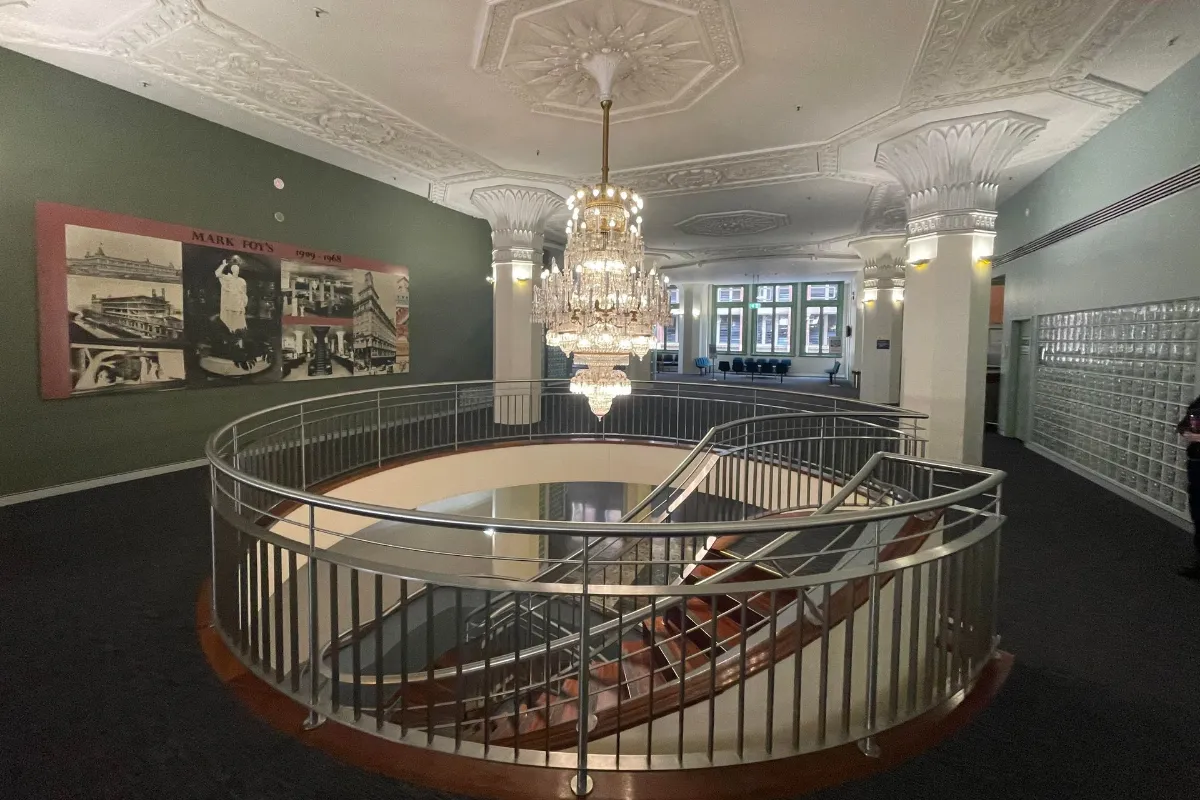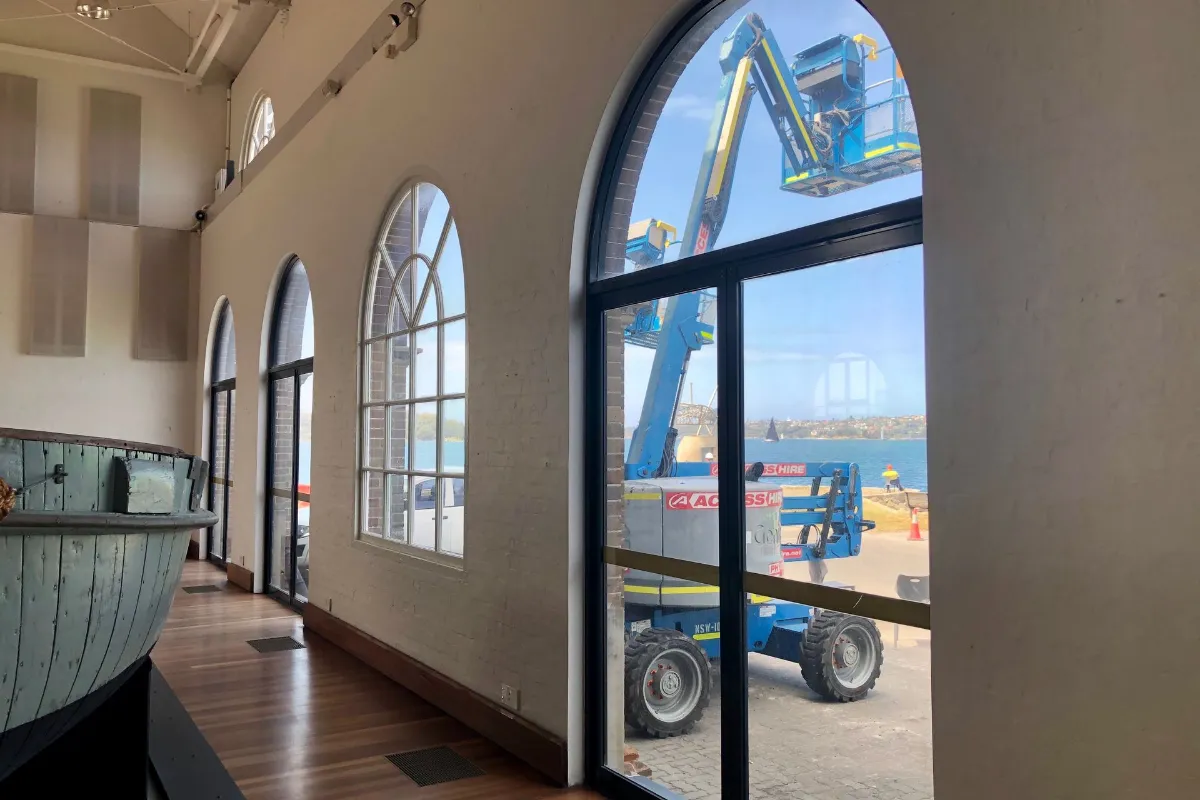Restoring heritage and government buildings while meeting modern safety standards

What’s historic must be handled with precision, especially when public use and legacy are part of the brief. Sydney has no shortage of beautiful heritage and government buildings with architectural integrity that is worth preserving. Restoring them while meeting today’s safety and compliance requirements isn’t always straightforward, but with care, attention to detail and extensive experience, it can be done exceptionally well.
At Dukes, we’ve been transforming spaces since 1958 with a strong track record in technically complex, highly regulated projects. Our team consistently delivers tailored solutions that respect these sites and meet every requirement, without compromise.
“What’s historic must be handled with precision, especially when public use and legacy are part of the brief.”
Respecting heritage detail while meeting safety standards
No heritage restoration can begin without the right approvals. That’s why the Dukes team collaborates with councils, government bodies and architects from the very start to ensure every part of the project meets conservation guidelines. We engage with all stakeholders early and put together detailed methodologies, mock-ups and physical samples for review, so everyone knows what to expect before work on site gets underway.
Where original finishes are still visible, we will assess them carefully to preserve or replicate the intended aesthetic. We use limewash, clear coatings and traditional oil-based paints wherever possible. When a more durable or compliant option is needed, we choose breathable membranes and low-VOC primers to protect older substrates without compromising the integrity of the building.
Tradespeople often work by hand to restore mouldings, trims or features that would be lost or damaged by modern tools or processes. This allows them to retain the fine architectural detail that defines the character of heritage buildings. It might be a slower approach, but it guarantees that the finished result respects the building’s age, craftsmanship and visual identity.
“Preserving the character of a heritage building starts with respecting its original methods, not overriding them with shortcuts.”
The complexities behind access, safety and WHS requirements
Every project begins with a tailored WHS management plan that considers the layout, use and risk profile of the site. When a building remains operational, the plan must account for workers, tenants, staff and public access to ensure risks are properly managed. Toolbox talks, site inductions and permit-to-work systems are implemented to maintain safe, consistent standards throughout.
Access strategies are designed to reflect the site’s function, traffic level and heritage significance. In high-use or sensitive environments, the Dukes team installs engineered scaffolding, uses certified anchor points or abseil systems, and manages pedestrian boundaries carefully. These methods prioritise safety without disturbing original elements or slowing down progress unnecessarily.
Legacy materials are another key consideration. Older coatings such as lead paint are still commonly found in government and heritage sites. When this happens, it’s important to conduct thorough testing and apply best-practice remediation systems to reduce health and environmental risks while ensuring works are compliant and under control.
Compared to standard commercial painting jobs, heritage projects present a unique set of challenges. There’s often a fine line between maintaining authenticity and meeting today’s durability and compliance expectations. Defects like substrate movement or structural cracking are frequently uncovered only after access is established. Any required repairs must follow heritage-specific methodology rather than modern construction practices.

When modern upgrades meet legacy architecture
Restoration work on heritage buildings requires coatings that not only preserve visual detail but also protect ageing substrates. Breathable membranes and low-VOC primers are often chosen for this reason. They allow older materials to ‘breathe’ and minimise the risk of trapped moisture, blistering or long-term damage beneath the surface. These products also help meet environmental standards.
Paint manufacturers like Dulux and Taubmans offer high-performance systems that can be adapted to heritage contexts to combine visual accuracy with better flexibility and durability than their traditional counterparts.
A case study on Sydney Heritage Courthouse
Dukes was engaged to complete a complex restoration at a heritage courthouse in Sydney. The scope included full lead paint remediation, compliance with conservation requirements, and uninterrupted site access throughout the project.
Health and safety came first. The team implemented a lead paint management plan to minimise exposure risks and ensure full environmental compliance. All works were carried out under strict containment protocols, with continuous monitoring to protect workers and the public.
Scaffolding was installed inside the courthouse, supported by engineering approvals and detailed structural drawings. Dukes delivered daily and weekly safety briefings, along with a formal compliance program, to keep the project on track and within regulatory standards.
To meet heritage obligations, we worked closely with NSW Government representatives to align all coatings and finishes with approved conservation guidelines. Site mock-ups and physical samples were used to ensure the finished work remained true to the original character.
Despite the challenges of working within a live environment, the project was completed with zero safety incidents and minimal disruption. The restored building retained its architectural integrity while meeting modern safety expectations.
“Heritage painting is not just about appearance, it’s about protecting materials, managing compliance and meeting public-use standards all at once.”
Talk to the experts in commercial painting for government and heritage buildings
Heritage and government painting projects aren’t standard. They require skilled execution that preserves architectural integrity while staying within the bounds of modern regulation and public use.
At Dukes, we’ve been trusted to restore and enhance many of Sydney’s landmark buildings. We take a careful and accountable approach, with open communication at every stage. Our reporting process includes detailed updates and photographic records, so stakeholders can follow progress and see that every part of the job is being handled properly.
If you’re in Sydney and looking for a commercial painter that specialises in government and heritage sites, contact us today.
By Paul Williams
General Manager
Key Takeaways

Effective restoration starts with consultation, approvals and a methodology that respects architectural intent.

Heritage projects require traditional techniques paired with compliant coating systems that protect older substrates.

Tailored WHS plans that include safe access and environmental risk management are critical for heritage sites.

Regular reporting, visual documentation and collaboration ensure transparency and alignment throughout the project.
FAQs
How does Dukes protect older substrates and finishes on heritage sites?
We assess every visible original finish and match it carefully with heritage-appropriate materials. Limewash, clear coatings and oil-based paints are used where possible. When modern performance is needed, we select breathable membranes and low-VOC primers that shield older substrates without trapping moisture or altering the building’s character.
What steps do you take to manage safety and compliance on live heritage projects?
Each project starts with a site-specific WHS management plan tailored to the building’s layout and use. We control access with engineered scaffolding, certified anchor points or abseil systems, and manage pedestrian routes for public safety. Toolbox talks, inductions and permit-to-work systems keep everyone informed and compliant.
How does Dukes handle hazardous materials like lead paint?
Before surface preparation begins, we test for legacy coatings such as lead paint. If detected, we apply a comprehensive lead paint treatment system with strict containment and environmental controls. This allowed the Sydney Heritage Courthouse to stay operational while risks were managed safely.
What makes Dukes’ approach to heritage projects different from standard commercial painting?
We balance authenticity with durability and compliance. When hidden defects appear after access is set up, repairs follow heritage methodology rather than modern shortcuts. Our tradespeople often work by hand on mouldings and trims to preserve the building’s detail and architectural integrity.
How does Dukes keep stakeholders informed during complex restorations?
Transparency is built into every project. We provide regular progress reports and photographic documentation so councils, government bodies and other stakeholders can follow developments closely. This approach ensures expectations are aligned and conservation requirements are consistently met.
Recent projects
Recent projects
© Copyright Dukes Painting Services Pty Ltd. Website by Brilliant Digital
























